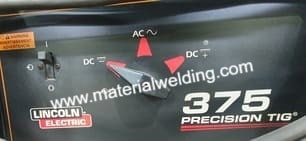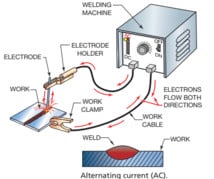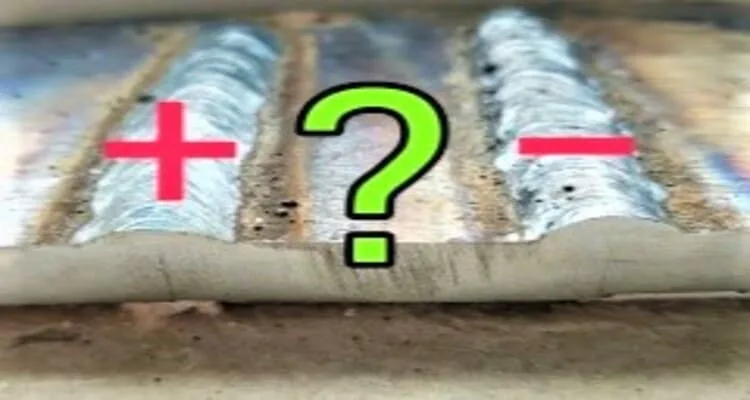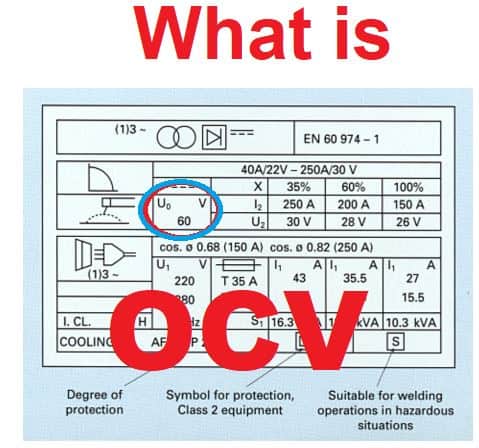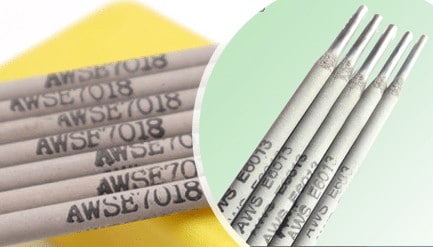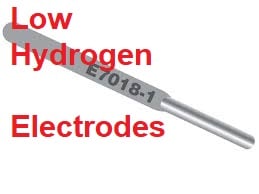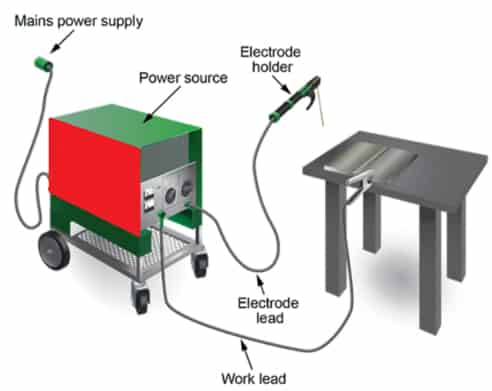Stick Welding Polarity: What Polarity is Stick Welding?
Stick welding Polarity is the direction of the current flow through the electrode and workpiece. Welders should be aware of the different types of polarity and how they can affect the quality of their welds. By understanding polarity, welders can produce high-quality welds that meet their specific needs.
Stick Welder Polarity
When welding with a stick welder, it is important to be aware of the polarity of the machine. The electrode, or metal rod that is used to create the arc, is connected to the positive terminal of the machine.
The workpiece, or metal that you are welding on, is connected to the negative terminal. This creates a circuit that allows the electricity to flow from the electrode through the arc and into the workpiece.
The two types of Stick Welder Polarity are:
- Direct current (DC): Two Types: DCEP (Reverse Polarity) & DCEN (Straight Polarity)
- Alternating current (AC).
DC Polarity is the most common type of polarity used in stick welding. AC is used for special applications where arc blow or metal vaporization could be a problem.
Related reading: Welding Polarity, Its Types in Details.
Stick Welding Electrode Positive or Negative?
When it comes to stick welding, there are two types of electrodes (stinger): positive and negative. But which one should you use?
Here’s a look at the type of electrode that uses Positive or Negative, so you can make the best decision for you.
Note: Electrode (stinger) with ☆ can be used with both Positive & Negative Electrode.
| Electrode Positive | Electrode Negative |
|---|---|
| E6010 |
E6012 |
| E6011 | ☆E6013☆ |
| ☆ E6013☆ | E6022 |
| E6018 | ☆E7014☆ |
| ☆E7014☆ |
☆E7024☆ |
| E7015 | |
| E7016 | |
| E7018 | |
| ☆E7024☆ |
|
| E7028 |
E6010, E6011, E6013, E6018, E7014, E7015, E7016, E7018, E7024 and E7028 Stick Welding electrode (stinger) have Electrode Positive. E6012, E6013, E6022, E7014 and E7024 are Electrode Negative.
So, which one should you use? It depends on the material you’re welding and the thickness of the material.
Stick Welding Ground Positive or Negative?
Welding ground must be attached to the metal being welded. The table below shows when to use negative or positive stick welding ground.
The negative ground is typically used when welding steel and iron. The negative electrode creates a more stable arc, which is necessary for thicker metals.
Note: Electrode with ☆ can be used with both grounds.
| Ground Negative | Ground Positive |
|---|---|
| E6010 |
E6012 |
| E6011 | ☆E6013☆ |
| ☆ E6013☆ | E6022 |
| E6018 | ☆E7014☆ |
| ☆E7014☆ |
☆E7024☆ |
| E7015 | |
| E7016 | |
| E7018 | |
| ☆E7024☆ |
|
| E7028 |
The decision of whether to use positive or negative stick welding ground depends on the type of welding electrode as shown in the above table.
As you may experience, positive grounding has a number of advantages over negative grounding.
For one, it results in less spatter and cleaner welds. It also provides better arc control and stability, and is less likely to cause welding defects.
So if you’re looking for the best results from your stick welding, make sure to ground the electrode positively. You’ll be glad you did!
When SMAW welding on carbon steel what polarity is used?
When SMAW welding on carbon steel, the electrode is connected to the positive terminal of the welder and the workpiece is connected to the negative terminal. This polarity is known as Electrode Positive or DCEP (Reverse Polarity).
Most of the SMAW welding electrodes for Carbon Steel uses Reverse Polarity (DCEP). Most commonly used rods such as E7018, E6010, E6011, E6013, E6018 and many more rods are used Electrode positive polarity only.
Stick Welding Polarity Chart
When it comes to stick welding, there are a few different things that you need to know in order to be successful. One of the most important things is understanding polarity.
Polarity is simply the direction of the current flow. In direct current (DC) welding, the current flows from the negative electrode through the arc and into the positive electrode.
In order for this to happen, you need to have the correct polarity connected to your machine.
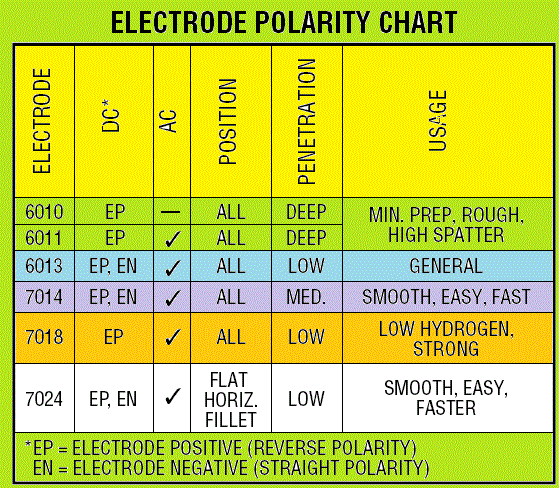
If you’re not sure which polarity to use, refer to the above stick welding polarity chart. These charts will show you which setting is best for different welding rods, their usage, and welding position.
FAQS
7018 DCEN or DCEP?
7018 welding rod is a DCEP & AC polarity welding electrode used for carbon steel welding. 7018 can be used easily with DECP due to the presence of potassium in its coating.
Read more: 7018 Welding Rod: Everything you need to know.
6013 Welding rod AC or DC?
6013 Welding Rod can be used with AC and DC both. with DC, 6013 welding rod is compatible with both electrode positive (DCEP) and electrode negative (DCEN) polarity.
Read more: 6013 Welding Rod: Everything you need to know.
6010 DCEN or DCEP?
6010 Welding rod can only be used with DCEP (Electrode Positive Polarity). This is due to the presence of sodium in the coating. Sodium atoms are very small and thus not allows change from positive to the negative phase of welding current.
Read more: 6010 Welding Rod: Everything you need to know.
6013 DCEN or DCEP?
6013 welding rod can be used with both DCEP and DCEN Polarity. This rod can also be used with AC Polarity.
Stick Welding Earth Positive or Negative?
Stick welding earth can be positive or negative depending on the type of welding rod. Some welding rods work only with earth negative ( such as E6010 & E7018) while some rods can be used with both earths positive and negative (such as E6013, E7014, E7024).
So type of earthing in stick welding depends on the welding electrode type. Refer to the chart in this post to find the earthing type (grounding) for different welding rods.
Stick Welding Negative or Positive?
Stick welding can be used with negative and positive, both polarities. The type of polarity however depends on the type of welding electrode used as explained in this post earlier.
Arc welding earth positive or negative stick?
Arc welding earth can be positive or negative depending on the type of welding rod. Some welding rods work only with earth negative ( such as E6010 & E7018) while some rods can be used with both earths positive and negative (such as E6013, E7014, E7024).
So type of earthing in arc welding depends on the welding electrode type. Refer to the chart in this post to find the earthing type (grounding) for different welding rods.
